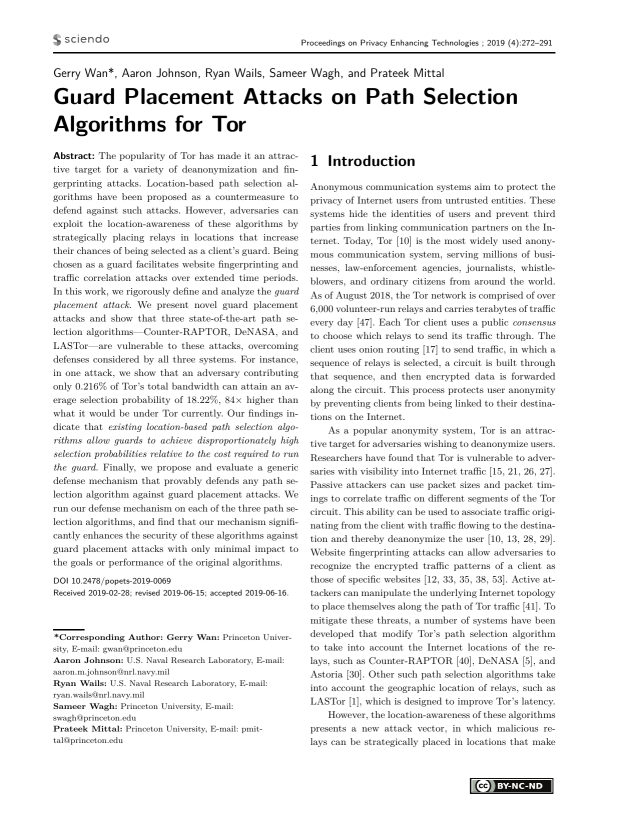Guard Placement Attacks on Path Selection Algorithms for Tor
Authors: Gerry Wan (Princeton University), Aaron Johnson (U.S. Naval Research Laboratory), Ryan Wails (U.S. Naval Research Laboratory), Sameer Wagh (Princeton University), Prateek Mittal (Princeton University)
Volume: 2019
Issue: 4
Pages: 272–291
DOI: https://doi.org/10.2478/popets-2019-0069
Abstract: The popularity of Tor has made it an attractive target for a variety of deanonymization and fingerprinting attacks. Location-based path selection algorithms have been proposed as a countermeasure to defend against such attacks. However, adversaries can exploit the location-awareness of these algorithms by strategically placing relays in locations that increase their chances of being selected as a client’s guard. Being chosen as a guard facilitates website fingerprinting and traffic correlation attacks over extended time periods. In this work, we rigorously define and analyze the guard placement attack. We present novel guard placement attacks and show that three state-of-the-art path selection algorithms—Counter-RAPTOR, DeNASA, and LASTor—are vulnerable to these attacks, overcoming defenses considered by all three systems. For instance, in one attack, we show that an adversary contributing only 0.216% of Tor’s total bandwidth can attain an average selection probability of 18.22%, 84× higher than what it would be under Tor currently. Our findings indicate that existing location-based path selection algorithms allow guards to achieve disproportionately high selection probabilities relative to the cost required to run the guard. Finally, we propose and evaluate a generic defense mechanism that provably defends any path selection algorithm against guard placement attacks. We run our defense mechanism on each of the three path selection algorithms, and find that our mechanism significantly enhances the security of these algorithms against guard placement attacks with only minimal impact to the goals or performance of the original algorithms.
Copyright in PoPETs articles are held by their authors. This article is published under a Creative Commons Attribution-NonCommercial-NoDerivs 3.0 license.

